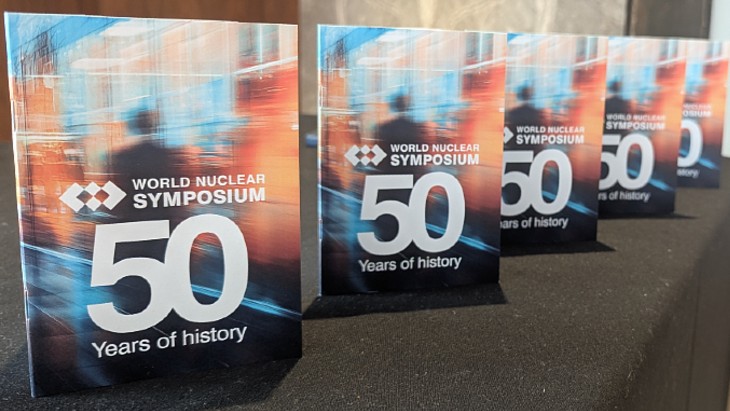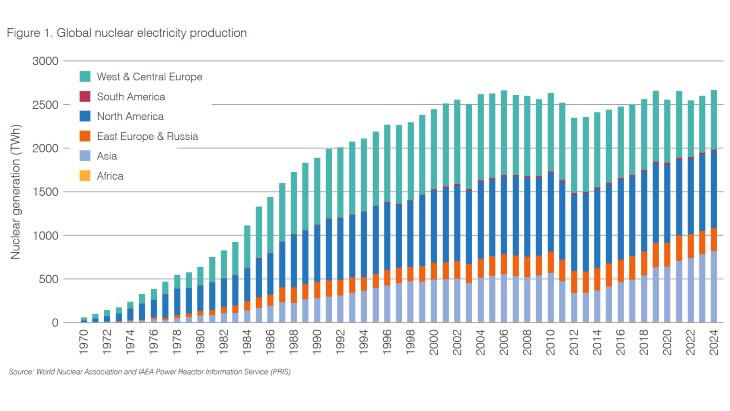As part of the waste disposal process, the spaces between the containers in the LLW vault are being filled with grout. The team undertook a series of trials to confirm that the grout would readily flow between the containers and also tested the membranes that will be used to seal the grout shutters.
A first campaign of grouting has now been completed within the vault and 16 waste packages have been sealed into their final positions, Dounreay Site Restoration Ltd (DSRL) announced. Further grouting campaigns of increasing size are planned.
In parallel with this work, the external space around the outside of the walls of the vault has been backfilled with aggregate. In the first phase of this work, enough aggregate to fill an Olympic sized swimming pool has been used to fill up to 2.5m high around the structure. This, DSRL said, is only 2% of the total volume of material that will be needed to backfill, cap and close the two vaults once they are full.
The work has been completed by a team from DSRL along with local contractors Arch Henderson, John Gunn & Sons, JGC Engineering and Hugh Simpson Contractors.
"This work is a strategically important demonstration that we can carry out this crucial part of the disposal process, which will eventually enable us to close the vault," said Project Manager Graeme Morgan.
The Dounreay site applied to Highland Council for planning permission to build six LLW disposal vaults in July 2006. The council granted planning permission in April 2009. Graham Construction won a tender to design and build the facility and construction began in November 2011.
Completion of construction of phase one of the facility, comprising two vaults, was ceremoniously celebrated in April 2014. One of the vaults will be used for disposal of LLW arising from previous operations at Dounreay, while the other will accommodate waste generated by decommissioning operations at the site.
Each vault covers approximately 1.8 hectares and is 11 metres from top to bottom. The largest vault is 80 by 50 metres, the second vault only slightly smaller. Each vault consists of a reinforced concrete floor slab founded on bedrock with reinforced concrete walls and sheltered by a portal frame cover building. The drainage and pumping systems ensure that the vaults remain dry during the waste emplacement phase.
Active commissioning of the associated encapsulation plant began in April 2015 when a container packed with LLW was filled with grout. This container was placed within one of the LLW vaults the following month.
The LLW vaults will be used for the disposal of up to a maximum of 175,000 cubic metres of solid LLW, which is expected to be generated during the decommissioning of the Dounreay site, in addition to waste that will be retrieved from a series of historical LLW pits there.
LLW typically consists of debris such as metal, plastics and rags that have been contaminated during the clean-out of facilities where radioactive materials were handled. By volume, LLW represents more than 80% of all the radioactive waste generated by Dounreay's demolition. However, by radiological hazard, it represents less than 0.1%.
Dounreay was the UK's centre for experimental fast breeder research and development from 1954 until 1994.

.jpg)



_58913.jpg)
_17992.jpg)
_75800.jpg)





